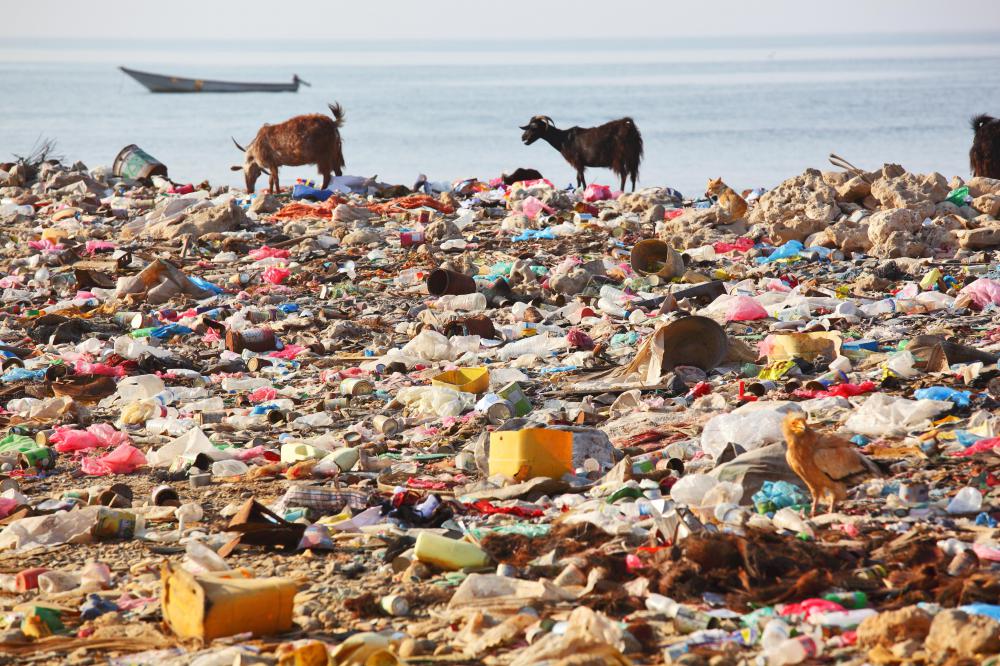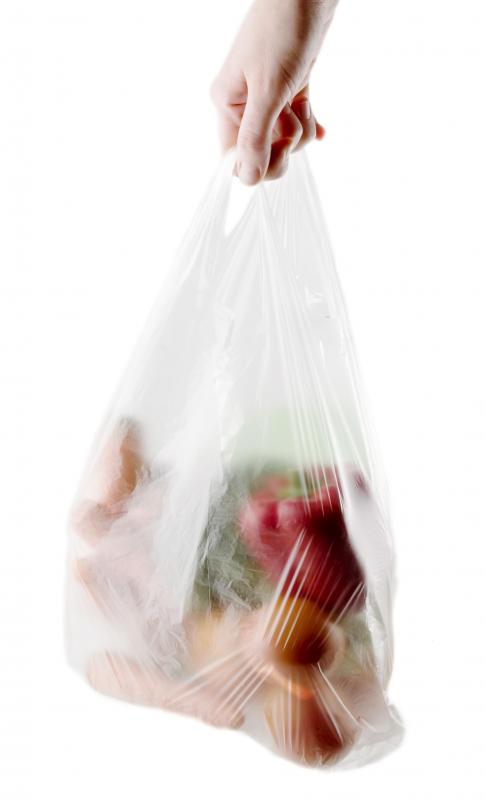At AllThingsNature, we're committed to delivering accurate, trustworthy information. Our expert-authored content is rigorously fact-checked and sourced from credible authorities. Discover how we uphold the highest standards in providing you with reliable knowledge.
What is Plastic Pollution?
Modern plastic is found in many items, from packaging to automobile parts. If it is not recycled or properly disposed of, it becomes plastic pollution. Minute particles collect in the ocean and poison fish that humans and other animals depend on for food. Plastic bags and bottles littering roadways are unsightly and release harmful chemicals into the environment. Strict litter laws and recycling programs as well as innovative cleanup solutions are some ways plastic pollution can be reduced.
Plastic is not biodegradable, and even if it is recycled it does not get rid of it. Burning it releases toxic gases, throwing it away fills up landfills, and tossing it in the ocean endangers sea life. Animals that rely on sea life for food may be severely impacted, and an estimated 44% of seabirds have eaten plastic.

Plastic presents a disposal problem on land. Recycling plastic is not as common as glass or cardboard. Grocery bags and disposable water bottles are often seen in ditches and stuck to foliage. Animals can get caught in the rings from soda cans and strangle or starve. Endocrine-disrupting and carcinogenic chemicals from plastic pollution, such as phlalates, bisphenol A, and styrene monomer, can leach from the material into groundwater.

The Great Pacific Garbage Patch is an area in the North Pacific Gyre, where the concentration of plastic pollution is much higher in the water column than normal. Tiny particles of broken-down material and chemical sludge have been collecting in the currents of the gyre. The plastic can absorb toxins and be ingested by sea life. Removal is not possible without seriously disrupting microbial and plankton life in the area. The patch is not as big as some media has portrayed it, but is still a concern.

Scientists are studying plastic pollution with a goal of finding ways of reducing damage already done. In 2009, a Japanese research team discovered that some types of plastic break down more quickly and at cooler temperatures in the ocean than previously thought. Later findings by British researchers showed that some microbes attach themselves to plastic and may break down both toxins and the plastic itself. Continued study will hopefully find the microbes or another natural solution can combat the problem.

Communities can help prevent plastic pollution by implementing more aggressive recycling programs. Cities around the world have instituted policies banning plastic bags or taxing their use. Many people in Europe and the US use cloth or string bags for shopping. Retailers have instituted programs for collection and recycling of plastic bags, as well as small discounts for using cloth bags they also sell. Countries with strict anti-litter laws, who have fines and penalties for dumping plastic waste, can be used as models for better regulatory compliance.
Frequently Asked Questions
What exactly is plastic pollution?

Plastic pollution refers to the accumulation of plastic products in the environment that adversely affects wildlife, wildlife habitat, and humans. It encompasses a range of items from large containers and discarded fishing nets to microplastics that are less than five millimeters in size, which can be ingested by marine life, leading to harmful biological effects.
How does plastic pollution impact marine life?

Marine animals often mistake plastic waste for food, leading to ingestion and potential starvation or choking. According to the United Nations, at least 800 species worldwide are affected by marine debris, and approximately 80% of this debris is plastic. Entanglement in plastic waste can also lead to injury or death for marine creatures.
What are microplastics and why are they a concern?
Microplastics are tiny plastic particles less than five millimeters in size. They arise from the breakdown of larger plastics or are manufactured for use in products like cosmetics. These particles are concerning because they can easily enter food chains, potentially accumulating in the bodies of animals and humans, with unknown long-term health effects.
How much plastic waste ends up in our oceans annually?
It's estimated that around 8 million metric tons of plastic waste enter the oceans each year, as reported by the National Oceanic and Atmospheric Administration (NOAA). This staggering amount is equivalent to dumping a garbage truck full of plastic into the ocean every minute, severely impacting marine ecosystems.
What can individuals do to reduce plastic pollution?
Individuals can make a significant impact by reducing their use of single-use plastics, recycling properly, participating in local clean-up efforts, and supporting legislation that aims to reduce plastic production and waste. Choosing products with less packaging and using reusable bags, bottles, and containers are simple steps that can lead to substantial change.
Are there any successful initiatives to address plastic pollution?
Yes, there are numerous initiatives aimed at tackling plastic pollution. For example, the Ellen MacArthur Foundation's New Plastics Economy initiative brings together key stakeholders to rethink and redesign the future of plastics. Additionally, the Global Partnership on Marine Litter works internationally to address the global challenge of marine litter, including plastic waste.
AS FEATURED ON:
AS FEATURED ON:
















Discuss this Article
Post your comments